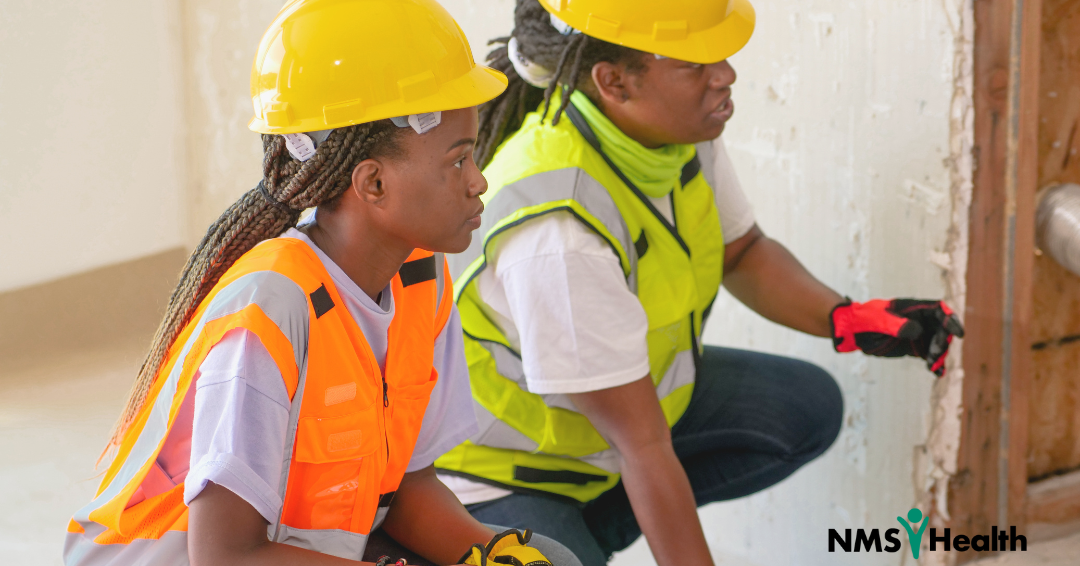PPE by design is made to keep workers safe on the job. Ill-fitting, PPE, however, can have the opposite effect. Oversized jackets, coveralls, or work shirts can be cumbersome, and at times dangerous. When PPE has excess fabric it can be caught in machinery. If the fit is too bulky it can interfere with the ability to safely operate equipment. Often it is women who bare the brunt of ill-fitting PPE. Most PPE is based on the sizing of American and European males, leaving blind spots when it comes to protecting female workers. Women make up nearly 50% of the workforce, but finding gender-specific PPE is still a challenge for many women on the job, according to a report from the American Society of Safety Professionals (ASSP).
Outdated Data
Much of the data used to develop PPE was collected from military personnel and the general population in the 1950s and 1970s. The data collected was largely based on men who were young, fit, and the majority of whom were white.
“These decades-old data do not represent, on average and collectively, the sizes and body types of today’s workers, who are much more diverse in age, gender, and ethnicity. NIOSH research has shown workers have unique shapes and sizes for specific occupations.” NIOSH says.
Many workers today don’t fall within the prescribed range developed from the old data collected. Those workers who are overweight, shorter than 5’5ʺ, taller than 6’, or otherwise built differently than an “average” man can face a major challenge. When it comes to women’s PPE shirts and jackets, the policy has often been “one size smaller”.
The ‘One Size Smaller’ Issue
The problem with a “one size smaller” policy might be glaringly obvious – women are not just smaller than men. They have completely different builds. PPE is only effective if it is designed to fit the wearer’s body. Typically, women may have narrower shoulders, wider hips, and shorter torsos than men. Additionally, women often have smaller hands, and narrower fingers, highlighting the need for gender-specific PPE.
Safety & Health Magazine reviewed sizing differences between women’s and men’s PPE. Data from a manufacturer and wholesaler of PPE provided basic measurements for welding jackets. When comparing the measurements, they revealed that the chest of a woman’s medium jacket was 2 inches bigger than a man’s small jacket. Additionally, the shoulder width of the woman’s jacket was almost 2 inches narrower, and the sleeves and collar were also shorter.
“Although women don’t fit into one body mold, of course, merely sizing down could result in a jacket that is too tight in the chest area, but with sleeves up to 3 inches too long (a significant safety hazard) and a collar space too wide to effectively keep out the debris, sparks and spatter associated with welding.”
The Danger of Ill-Fitting PPE
Ill-fitting PPE can cause a host of hazards. When PPE is too loose it may be caught in machinery. If work boots are too large, women can trip, and their toes may not be protected by the steel cap. When goggles are too large, there may not be protection against flying debris. Not only does ill-fitting PPE put women in physical danger but also psychological danger.
Holly Burgess, CSP, EHS manager for Siemens Mobility, says in the ASSP report, “As more women enter into positions that require PPE, the lack of PPE for women becomes more apparent,” Burgess says. “Something is wrong when the very equipment that is supposed to protect you actually creates additional safety hazards. Physically, properly fitting PPE makes workers more comfortable. Psychologically, it makes them more confident and productive.”
PPE for Pregnancy
Fit issues for PPE are only exacerbated when it comes to pregnant workers. Employers may be reluctant to provide appropriate PPE for each stage of pregnancy, even if options are available. Often, options for maternity PPE can be very limited, and as PPE is not tested on pregnant individuals the risk to an unborn baby is unclear. A report from the British trade union, Prospect, stated that 11% of women survey respondents wore PPE while pregnant, while half curtailed their duties or changed job roles.
Changes on the Horizon
PPE expansion and technology has been a major focus, especially since the COVID-19 pandemic. The focus, however, needs to shift to gender-specific PPE. It is an employers’ responsibility to ensure the safety of all employees on the job. Until the proper fit and protection of women is prioritized, they will continue to be vulnerable at work. Allowing both female and male employees to test PPE before they use it, and allowing replacements as needed is the first step. Female employees should also be surveyed regarding fit, and their recommendations.


